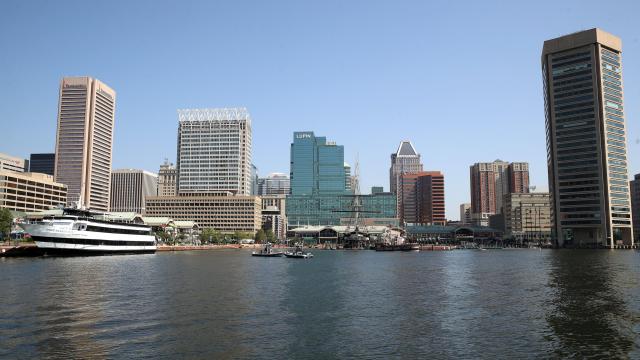In Baltimore, where I live, tons of unsightly stuff leaks into the Chesapeake Bay. Sewage. Industrial pollution. And, according to a new report, drugs.
The study, conducted by scientists with the Cary Institute of Ecosystem Studies and published in the journal Environmental Science & Technology on Wednesday, found that tens of thousands of doses of pharmaceuticals are flowing into the bay every year. They include everything from over-the-counter pain medicine to prescription antidepressants
For the study, the researchers sampled water from six different sites in one Baltimore watershed every week for one year. They then sent the samples to a chemist in Sweden to look for 92 pharmaceutical chemical compounds from eight different medications prescribed for infections, mood disorders, and other ailments. The compounds fell into 9 common classes of drugs: adrenergics (prescribed for asthma and other cardiovascular and respiratory issues), antibiotics, antidepressants, antiepileptics, antifungals, antihypertensives, urologicals, and painkillers separated into two categories, non-opioid and opioid analgesics. The authors found that all of these were present in varying degrees.
The highest concentrations they found were of non-opioid analgesics like Tylenol, Advil, and Aleve. Based on their samples, the researchers estimated that 15 kilograms of these drugs enter the Chesapeake Bay from the Gwynns Falls watershed every year. That’s the equivalent of 30,000 tablets of acetaminophen.
But the most commonly found drug in their samples were antibiotics, especially trimethoprim, which is prescribed for kidney infections and urinary tract infections.
“We found [trimethoprim] in 137 out of 371 total samples,” Megan Fork, a postdoctoral research associate at Cary Institute of Ecosystem Studies who led the study, said. “We think this is because people pop a Tylenol so often when they have a headache, so the amount of doses people use is so much higher … but when people take the antibiotics, which is less often, less of it can be removed by wastewater treatment plants.”
Lots of previous research has shown that both legal and illicit drugs enter waterways through wastewater treatment plants. When we consume drugs, whatever we do not metabolise passes into our pee, and sewage treatment plants aren’t designed to filter those trace amounts of drugs out.
This study was different, though: None of the sites that the researchers sampled had any direct wastewater from sewage treatment plants coming into them. They must have entered through a different source.
The authors can’t be completely sure exactly how the drugs got into the water stream. AJ Reisinger, an ecologist at the University of Florida who worked on the study, said some of the drugs could have gotten dumped into sinks or storm drains. Some could have also made it to the bay by people merely tossing away drugs in the street.
“People shouldn’t do this for environmental reasons, but people probably do,” he said.
Yet by far the most likely source of this pollution, Reisinger said, is the ageing sewage system.
“We think the most likely source is from leaky sewage infrastructure,” he said. “Just because there’s not any wastewater effluent from treatment plants doesn’t mean there’s not sewage directly coming in from broken pipes.”
The study provides yet more evidence that Baltimore’s sewage infrastructure is in need of a serious overhaul. The majority of the city’s sewage system is more than 50 years old, and parts of it are over a century old. The ageing pipes pose other problems, too, including sewage backups into people’s homes and the streets and contamination in the Inner Harbour, where up to 400 times the safe level for Enterococcus bacteria has been found.
The authors didn’t specifically look into the potential impacts of this pharmaceutical pollution on the health of marine ecosystems, but past research shows there’s likely cause for concern. Among deleterious impacts, scientists have observed medicine in waterways makes crayfish act strangely, impairs crabs’ and cuttlefishes’ ability to learn, and causes shrimp to swim toward predators. What’s more, the new study’s results suggest that the mix of compounds that marine life is exposed to changes constantly, which could make it hard to adapt.
“It was really surprising to me that concentrations could be really high one week but then so low that we couldn’t detect the compound at all the next week (and our ability to detect these compounds is pretty amazing: we can detect concentrations as dilute as the equivalent of a few grains of salt in an Olympic-size swimming pool),” Fork wrote in an email. “I think this variability highlights the fact that organisms that live in these streams are exposed to mixtures of pharmaceuticals that are constantly changing – they don’t get a chance to adapt because what they have to deal with is always changing.”
She said we need to do a lot more research into how much of these drugs are getting into the bay and how.
“Our findings underscore the ubiquity of drugs in freshwaters, and the need to examine and account for all pollution pathways, not just obvious ones like wastewater treatment plant effluent,” Fork said.
